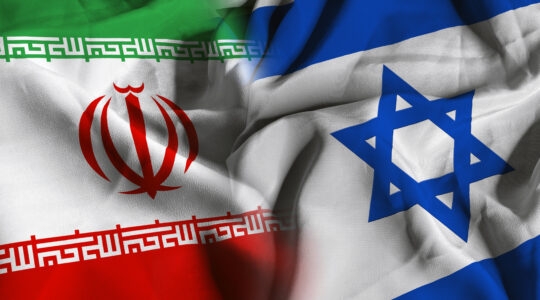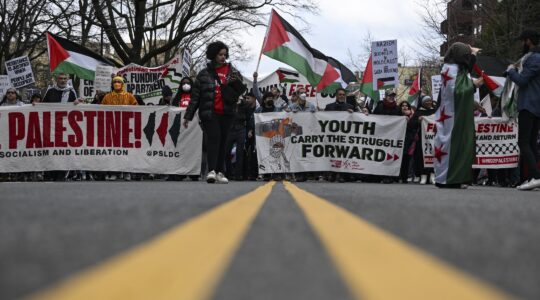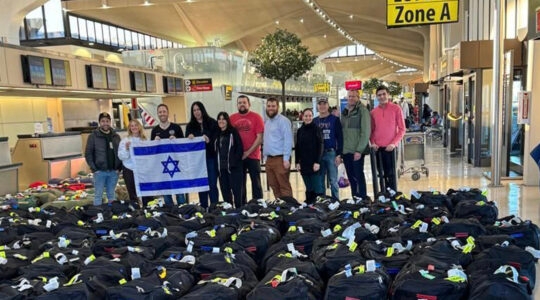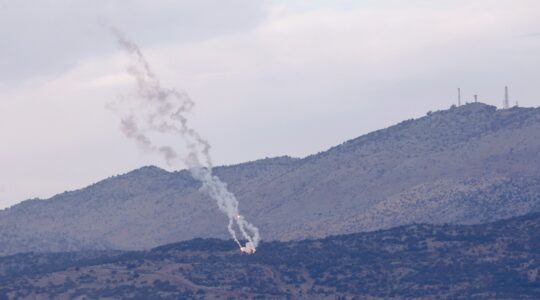TEL AVIV (JTA) – The consensus about the Tel Aviv Central Bus Station is that it is the worst building in Israel, if not in the entire world. At nearly 2.5 million square feet it is, for no apparent reason, the largest bus station on the planet.
Ha’aretz published an article recently about how most of Israel’s leading architects believe the station should be demolished. It probably should be.
But the bus station might just be my favorite place in Israel.
The building is plagued by pathological dysfunction: escalators skip floors; the ground slopes up and down at steep angles, bringing riders to enclaves of half-floors; neon signs point you to other neon signs that more often than not return you, exasperated, to your original location.
Construction on the bus station began in 1967, but because of myriad problems the building wasn’t completed until 1993. Of the station’s seven floors, the top two are devoted to the buses – signs designate the bottom two floors, seemingly abandoned, for “Parkings.”
From the fourth-floor promenade you can see down to the third floor and to the street exit – the exit is tantalizingly close – but you just can’t figure out how to get to the third floor.
More than a thousand shops and stands in the station sell anything and everything: lingerie, shoes, Tibetan trinkets, hookahs, cell phones. There are tailors and beauticians, jewelers and tattoo artists.
It’s a bazaar of the bizarre. A row of perfume shops flanks the McDonald’s, a woman sells tomatoes from a clothing shop that features oversized bras and fast-food workers smoke cigarettes in one hand as they serve your food with the other.
The building is also something of a cultural center, with bookstores and art schools and travel agencies. It’s an enormous market, a pastiche of Israeli society at its weirdest and most vibrant.
The holy and the profane mix with comic irony. Earnest Chabadniks wrap tefillin under a large poster of the rebbe’s smiling countenance within spitting distance of the Eros Sex Boutique. A synagogue and a Center for Family Safety sits near a pool hall and seedy arcade. The arcade isn’t exactly kid friendly; the ubiquitous mechanical claw fishes not for stuffed animals but cigarettes.
The range of graffiti is startling, everything from scratched-out Jewish stars to the popular “punk is dead” to “Am Yisrael Chai,” the nation of Israel lives.
Arriving at the bus station from one of its many entrances – there are egresses to at least five streets – sounds assault you from all directions: the pizza place blasts Israeli techno and trance, the Tibetan head shop pumps out Bob Marley, the Russian bookstore plays something undescribable.
Smoking, Israel’s favorite pastime, used to be permitted inside, so the bus station smelled like a giant ashtray. Those who actually wanted a giant ashtray didn’t have far to look: a third-floor shop is devoted solely to ashtrays – ornate, Mickey Mouse, checkerboard or otherwise.
At best, the bathrooms are cleaned infrequently. At the entrance to the restrooms, which require one shekel for admission but are nearly impossible to find, crowds gather around as invariably three middle-aged men try to sneak through the same turnstile simultaneously to avoid paying the extra shekel. Somehow I wind up paying that shekel.
Subcultures have embraced various corners of the building. Some storefronts are exclusively in Thai, some in Russian, some in English. Of course there is Hebrew, which in much of the station seems almost like an afterthought.
A mini Asiatown has formed inside the bus station. A two-story advertisement for Cellcom, the Israeli mobile phone company, features a Thai woman posed on her cell phone and text in Thai. Asian supermarkets, fast food noodle joints and remittance agencies have signs incomprehensible to most Israelis.
The Russians have an even larger niche, with at least four bookstores, several tattoo parlors and a body oil shop. Russian might be the building’s lingua franca.
The Ethiopians have their “Ethiopian style” hair salon, cosmetics stand and restaurant. A store sells Rasta clothes, Jamaican flags, Ethiopian music and T-shirts that read “I Love Ethiopia.”
People watchers have no better place. Soldiers come and go on leave. Religious Ashkenazim try on jewelry. Ethiopian teenagers walk hand in hand. Heavy-set, elderly Russian women mumble to themselves as they try on bras.
American tourists beg for directions to the elusive bathrooms. An elderly Arab woman sells olives. A harried Russian cleaning lady yells at a shopkeeper for littering, wearily sweeping her broom. The owner of a juice stand ignores the waiting customers as he chain smokes and finishes his game of backgammon.
Kipah-clad Sephardim buy knock-off Lacoste polo shirts as they talk on cell phones. Israeli punks and Goths mill about among dog walkers.
Walking around the Central Bus Station, I’ve found a peculiar kind of comfort. If all these people – Arabs and Jews, religious and secular, Ashkenazim and Sephardim, Russians, Ethiopians and Thai – can coexist, however uneasily, amid this dysfunctional riot of petty capitalism and bus fumes, then maybe Israel as a whole has hope.
The scene has a strange beauty, a sort of gritty and defiant charm. On the one hand this is Israel at its worst: a nation beset by strikes and internal discord, by fantastic and nearly fatal design flaws. But against all odds, the bus station works.
In the end the bus station is Israel – as multicultural, as fascinating and as transcendently weird as it gets.
(Jacob Savage is a graduate fellow at the Shalem Center in Jerusalem.)





